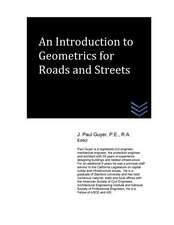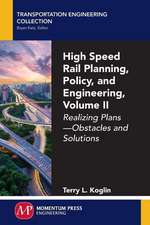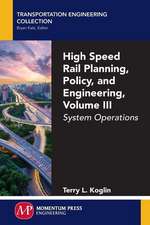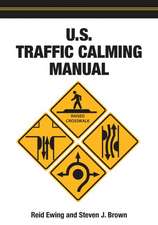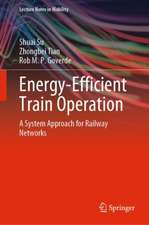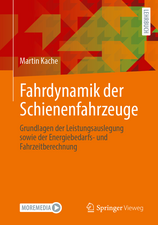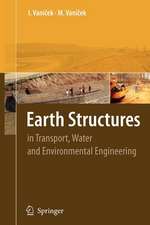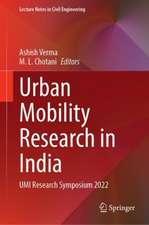Modern Earth Structures for Transport Engineering : Engineering and Sustainability Aspects
Autor Ivan Vanicek, Daniel Jirasko, Martin Vaniceken Limba Engleză Paperback – 13 dec 2021
This book will be of interest to specialists responsible for transport infrastructure planning, investors (project owners) of motorways and railways and environmental engineers. The main focus is on those responsible for geotechnical investigations, earth structures design and on contractors of such structures.
Preț: 409.25 lei
Nou
78.32€ • 81.59$ • 65.12£
Carte tipărită la comandă
Livrare economică 11-25 februarie 25
Specificații
ISBN-10: 0367546035
Pagini: 184
Dimensiuni: 174 x 246 x 10 mm
Greutate: 0.45 kg
Ediția:1
Editura: CRC Press
Colecția CRC Press
Public țintă
Postgraduate, Professional, and Professional Practice & DevelopmentCuprins
2 Risk in geotechnical engineering
3 Geotechnical risk reduction during earth structures of transport engineering
4 Sustainability design approach
5 Availability and affordability approaches
6 Conclusion and final recommendations
Notă biografică
Daniel Jirásko is lecturer at the Czech Technical University in Prague; consultant and designer. He has work experience in the UK for 1 year in a consulting company and half a year in Iraq as a supervisor and consultant for several dam projects. His research interests are in environmental geotechnics, earth structures and rock fall. He is a board member of the Czech Geotechnical Society and the Czech & Slovak chapter of ISSMGE, as well as a member of ELGIP (European large geotechnical institutes platform).
Martin Vaníček is technical director, designer, and consultant. His research interests are in calculation models for Earth structures, mainly reinforced by geosynthetics and contaminant transport. He has work experience in Belgium for 1 year in a nuclear research centre and in the United Kingdom for 4 years in a consulting company. He is member of the Czech Geotechnical Society, Czech & Slovak chapter of ISSMGE, author and co-author of many papers and co-author of a monograph on "Earth Structures in Transport, Water and Environmental Engineering". He is a member of a project team preparing part of the second generation of Eurocode 7. On ISSMGE European conferences he had an active role during the last about 15 years.
Descriere
Nowadays, demands on modern civil engineering structures require not only safe technical solutions, but also additional approaches, involving ecological, sociological and economical aspects. This book reacts on these new requirements with a focus on earth structures for transport engineering, mainly for motorways and railways. Technical demands have to be adequately related to the risk with which the design and execution are connected. Soil used for the construction, together with subsoil, are natural materials with a high degree of inhomogeneity. Therefore, the risk when constructing with such materials is much higher than for structures utilizing man-made materials. The engineering approach is firstly focused on the geotechnical risk identification and subsequently on the reduction of this risk. Geotechnical risk is linked to the uncertainties for individual phases of the design and construction processes. Ground model, geotechnical design model, calculation model and structure execution are the main phases of the above-mentioned processes. Risk reduction involves the lowering of the range of uncertainties for individual phases, guaranteeing safe and optimal technical solutions. Eurocode 7 "Geotechnical design" creates a general frame of this risk identification and reduction approach. Earth structures are offering great opportunities for sustainability approach. Therefore, the possibilities how to decrease consumption of land (greenfields), energy and natural aggregates are at the centre of interest. In parallel to sustainability, the principles of availability and affordability for transport infrastructures are discussed. The main aim there is to eliminate the impact of interaction of the transport infrastructure with natural and man-made hazards, thus guaranteeing long-term functionality.
This book will be of interest to specialists responsible for transport infrastructure planning, investors (project owners) of motorways and railways and environmental engineers. The main focus is on those responsible for geotechnical investigations, earth structures design and on contractors of such structures.

